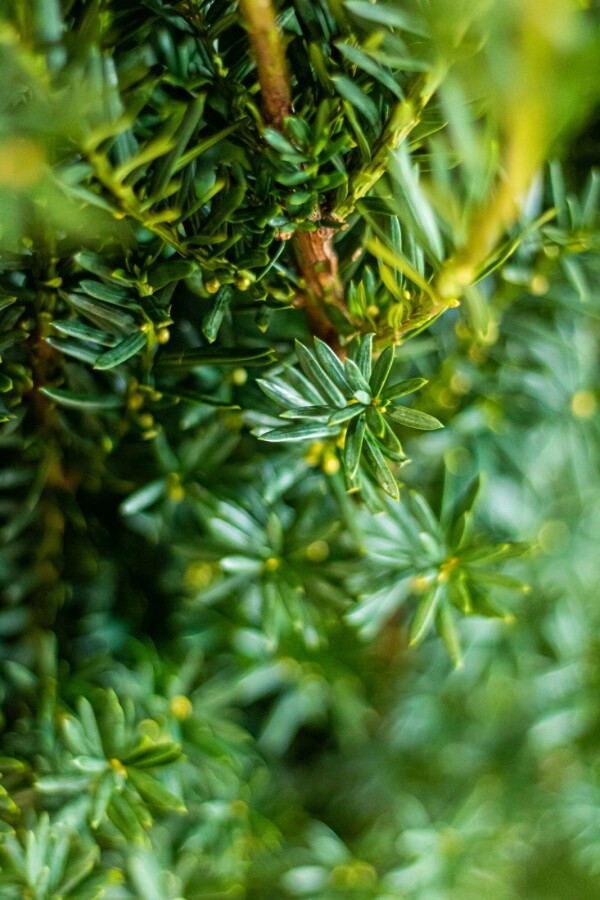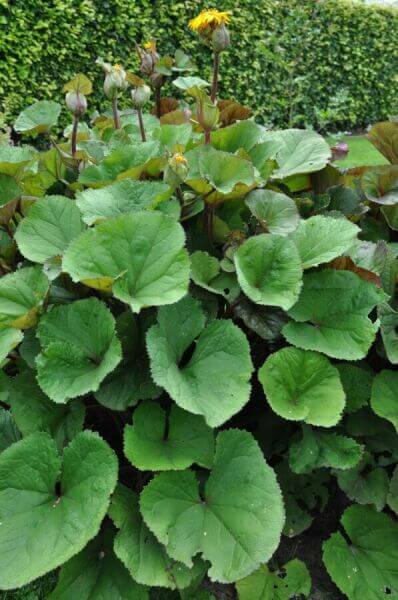Best Hedging Plants For Contemporary Borders
Improve your garden's appeal with lush hedge ranges such as Yew (Taxus), Thuja, Laurel, Photinia, and Bamboo, celebrated for their structural stability and ecological benefits.
Yew and Thuja supply evergreen coverage and winter season resilience, while Laurel uses fast development and broad, aromatic leaves.
Photinia adds seasonal beauty with its vibrant red foliage, and Bamboo provides a low-maintenance, tranquil ambiance.
These hedges improve air quality, lower noise, and produce tranquil, personal spaces.
Proper planting, spacing, and upkeep make sure energetic growth and environmental consistency.
Explore how these lush varieties can raise your garden's appeal and wellness.
Secret Takeaways
Change Your Garden With Lush Hedge Ranges
- Select Yew for its dense, evergreen growth and unrivaled durability.
- Select Laurel for its quick development and broad leaves, ensuring quick privacy.
- Select Photinia for its dynamic seasonal foliage, which turns a striking dark red.
- Make use of Bamboo for a low-maintenance, winter-hardy hedge with aesthetic appeal.
- Space plants 2-3 per meter and prune routinely for optimum development and health.
Popular Hedge Plants
When changing a garden with lavish hedge ranges, it's important to consider popular hedge plants such as Yew, Thuja, Laurel, and Photinia due to their unique attributes and benefits.
Yew (Taxus) is highly esteemed for its durability and thick, green development, making it a prime option for sustaining landscapes.
Thuja is kept in mind for its evergreen foliage and robust winter season durability.
Photinia adds seasonal vibrancy with red leaves that darken gradually, developing vibrant visual appeal.
Laurel provides fast growth and fragrant, broad leaves, ideal for fast personal privacy.
In Addition, Bamboo is an exceptional option for ambiance, offering a low-maintenance, winter-hardy option that boosts the garden's visual with its sophisticated, swaying walking sticks.
These selections cater to a range of horticultural requirements and preferences.
Benefits of Garden Hedges
Garden hedges offer a multitude of advantages, making them an important addition to any landscape. These natural barriers are affordable to implement and supply considerable wind protection, boosting air flow and contributing to noise reduction. The thick foliage of hedges like Thuja and Beech guarantees privacy by obstructing presence, creating a secluded and tranquil environment.
Hedges also play a crucial function in microclimate regulation, supplying a stable environment that cultivates plant growth and minimizes temperature level fluctuations. Their detailed leaf structures filter contaminants, improving air quality and adding to a healthier garden environment.
Moreover, hedges master noise decrease, absorbing and deflecting sound waves to lower ambient sound levels. This double functionality of providing both acoustic and visual privacy boosts the overall serenity and visual appeal of any garden.
Planting and Maintenance Tips
For a successful hedge, careful preparation of the planting area is important. Make sure the soil has proper pH and drain to support strong root advancement.
Space the plants appropriately for the selected types. Water the hedge frequently throughout its preliminary growth stage, adjusting as needed with seasonal modifications.
Carry out a systematic insect control and illness avoidance method, utilizing organic or chemical treatments when needed. Frequently inspect for aphids, mites, and fungal infections.
Apply mulch to keep wetness and reduce weeds. Seasonal pruning promotes thick development and air blood circulation, essential for plant health.
Following these guidelines will help you cultivate a dynamic, properly maintained hedge that boosts the appeal of your garden.
Spacing and Cutting Guidelines
Spacing and Cutting Guidelines
Proper spacing and trimming are crucial for cultivating healthy, visually appealing hedges. Sufficient spacing guarantees each plant receives adequate nutrients, light, and airflow.
Follow these guidelines for optimal hedge maintenance:
- Spacing: Position hedge plants 2-3 plants per meter to encourage robust growth.
- Pruning Strategies: Routine pruning is necessary for keeping wanted hedge height and shape. Cut brand-new growth in summertime and cut back older wood during winter season.
- Seasonal Care: Change cutting techniques and schedules according to seasonal requirements to guarantee plant health.
- Hedge Height: Regularly monitor and cut to keep the preferred hedge height and achieve uniform aesthetic appeals.
Sticking to these steps will ensure your hedge grows, enhancing both the appeal and functionality of your garden.
Picking the Right Hedge
Picking the Right Hedge
Choosing the proper hedge involves evaluating aspects such as fully grown height, foliage density, and environmental resilience. Effective hedge plant selection requires comprehending each types' growth characteristics and site-specific flexibility.
For instance, Yew (Taxus) offers excellent durability and dense growth, while Thuja is significant for its winter resilience. Additionally, thinking about maintenance requirements is vital; fast-growing species like Laurel or Privet need regular cutting, whereas low-maintenance options like Bamboo or Ivy may be more effective for those looking for very little maintenance.
Environmental aspects such as soil type, light accessibility, and wetness conditions should likewise direct the selection procedure. This mindful technique guarantees the chosen hedges will flourish, providing both visual and practical benefits to the garden landscape.
Delivery and Planting Advice
To ensure your hedge plants prosper, they should be delivered by specialized couriers and planted promptly upon arrival.
Follow these important actions for successful planting:
- Soil Preparation: Improve the soil with organic matter to improve drainage and nutrient material.
- Planting Depth: Develop a trench twice the width and equal to the depth of the root ball.
- Watering Methods: Water completely after planting, keeping the soil regularly moist however not saturated.
- Mulching: Use a layer of mulch to keep wetness and reduce weeds.
Customer Support and Service
Provided the important role of timely assistance in horticultural pursuits, our client support group is readily available 6 days a week through telephone, e-mail, and social media to offer expert recommendations and promptly attend to any concerns. Their dedication to quick response times guarantees client complete satisfaction by fixing inquiries associated with plant health, ideal planting techniques, and maintenance schedules.

Interaction Method
-----------------
Within 24 hr
This thorough support system, strengthened by an outstanding 9.3/ 10 consumer ranking, highlights our dedication to enhancing the gardening experience for each client.
Regularly Asked Concerns
How Long Does It Take for Hedge Plants to Develop?
Hedge plants usually need one to 3 years to end up being totally developed, with the specific period differing by types and growing conditions.
Reliable care throughout this important duration is vital for robust growth. Constant watering, watchful weed control, and proper fertilizer application are essential in promoting strong root development.
For instance, fast-growing types like Laurel might develop faster, while slower-growing ranges such as Yew might take longer. Diligent maintenance speeds up the facility procedure, leading to dense and healthy hedges.
What Are the Best Hedge Plants for Personal Privacy?
The concern of the very best hedge plants for privacy involves evaluating evergreen and deciduous alternatives.
Evergreen hedges like Thuja, Laurel, and Cypress provide year-round protection, guaranteeing constant personal privacy.
On the other hand, deciduous hedges such as Beech use seasonal privacy, shedding leaves in colder months.
Key upkeep suggestions for personal privacy hedges include routine trimming, fertilizing in spring, and appropriate spacing-- typically 2 to 3 plants per meter.
Furthermore, constant watering and diligent weed removal are vital for promoting healthy, thick growth.
Can Hedge Plants Draw In Wildlife to My Garden?
Yes, hedge plants can bring in wildlife to your garden by providing important benefits like shelter, food, and nesting websites, thereby boosting local biodiversity. For example, yew, holly, and laurel are excellent for bring in birds, while ivy supports a variety of pests.
Nevertheless, it is necessary to note that there are some drawbacks, such as increased maintenance to handle pests and routine upkeep. Carefully picking and preserving hedge ranges can help stabilize these downsides and benefits, ultimately cultivating a vibrant and sustainable ecosystem in your garden.
Exist Any Flowering Hedge Plants Available?
Yes, there are flowering hedge plants offered that can boost the beauty of your garden.
For example, Elaeagnus, likewise known as Olive Willow, produces fragrant white flowers in the fall, including a touch of sophistication.
Photinia, another popular choice, showcases dynamic red leaves that grow into an abundant green, creating a dynamic visual result throughout the seasons.
To make sure these plants thrive, it's vital to practice correct pruning strategies and seasonal upkeep, such as trimming brand-new development in the summer season and cutting back in the winter season.
These procedures will assist maintain the health and aesthetic appeal of your flowering hedges.
How Do I Prevent Insects in My Hedge Plants?
To avoid insects in hedge plants, use natural bug control approaches and keep proper hedge care. Introduce useful pests like ladybugs, which victimize damaging bugs, to create a well balanced ecosystem.
Regularly inspect your hedges for indications of problem and promptly remove any affected parts to prevent the spread. Make sure the health of your hedges by using well balanced fertilizers and supplying appropriate water.
Make use of mulching to keep soil moisture and proper spacing to reduce plant stress and promote robust development. These practices jointly assist in lessening insect issues and maintaining a healthy hedge.
Conclusion
In essence, picking the ideal hedge varieties such as Yew, Thuja, and Laurel can transform any garden into a tranquil sanctuary. These plants offer year-round Article source greenery, boost visual appeal, and offer practical advantages like sound decrease and wind protection.
Proper planting strategies, accurate spacing, consistent watering, and seasonal cutting are crucial for ideal growth.
Reputable delivery services and expert consumer support ensure a smooth experience from purchase to planting, making it simpler than ever to raise your outdoor area.
Garden hedges provide a wide range of advantages, making them a valuable addition to any landscape. These natural barriers are cost-effective to carry out and provide considerable wind protection, boosting air flow and contributing to sound reduction. The dense foliage of hedges like Thuja and Beech ensures privacy by blocking exposure, developing a peaceful and remote environment.

Pruning Methods: Regular pruning is essential for maintaining wanted hedge height and shape. Cut new growth in summer season and cut back older wood during winter.